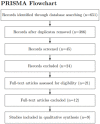Targeting CMV Reactivation to Optimize Care for Critically Ill COVID-19 Patients: A Review on the Therapeutic Potential of Antiviral Treatment
- PMID: 37243251
- PMCID: PMC10221621
- DOI: 10.3390/v15051165
Targeting CMV Reactivation to Optimize Care for Critically Ill COVID-19 Patients: A Review on the Therapeutic Potential of Antiviral Treatment
Abstract
Cytomegalovirus (CMV) reactivation has been linked to adverse clinical outcomes in critically ill patients, with emerging evidence suggesting a potential connection with severe COVID-19. Mechanisms driving this association may include primary lung injury, amplification of systemic inflammation, and secondary immunosuppression. Diagnostic challenges in detecting and assessing CMV reactivation necessitate a comprehensive approach to improve accuracy and inform treatment decisions. Currently, there is limited evidence on the efficacy and safety of CMV pharmacotherapy in critically ill COVID-19 patients. Although insights from non-COVID-19 critical illness studies suggest a potential role for antiviral treatment or prophylaxis, the risks and benefits must be carefully balanced in this vulnerable patient population. Understanding the pathophysiological role of CMV in the context of COVID-19 and exploring the advantages of antiviral treatment are crucial for optimizing care in critically ill patients. This review provides a comprehensive synthesis of available evidence, emphasizing the need for additional investigation to establish the role of CMV treatment or prophylaxis in the management of severe COVID-19 and to develop a framework for future research on this topic.
Keywords: CMV; COVID-19; SARS-CoV-2; antiviral agents; critically ill; cytomegalovirus infections; intensive care units.
Conflict of interest statement
The authors declare no conflict of interest.
Figures
References
Publication types
MeSH terms
Substances
LinkOut - more resources
Full Text Sources
Medical
Miscellaneous


